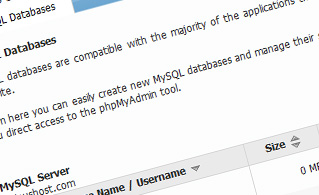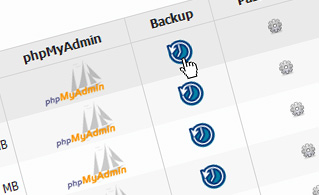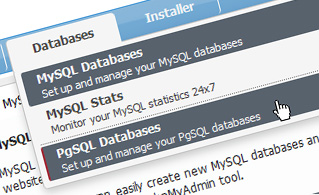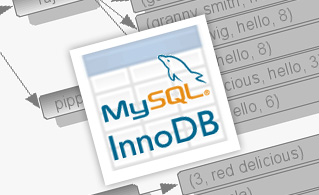Hepsia Database Manager
The Hepsia Control Panel offers a fully featured database administration graphical user interface, which will give you absolute command over your DBs. You can easily set up brand new MySQL and PgSQL databases and administer their settings via the phpMyAdmin and phpPgAdmin tools respectively.

An Easy-to-Use Interface
With the Database Manager GUI, you can set up a brand new DB in seconds - just fill in its name and that's all. You will see a list of all your databases and their corresponding sizes. You will be able to alter passwords, to create database backup files and to even log in to the phpMyAdmin and phpPgAdmin database management tools.

Simple Database Backups
It is quite essential to create periodic backups of your databases to protect your website content and to abstain from any unexpected loss of data. With the Database Manager, creating a database backup file is very easy. Just click on the Backup icon next to the database you wish to back up and you will be immediately taken to the File Manager from where you can download your freshly created backup file.

MySQL and PgSQL Databases
The number of PostgreSQL and/or MySQL DBs that you can create varies depending on the shared hosting package that you have selected. While MySQL is a very famous database management system utilized by millions of users all around the world, PostgreSQL is thought of as being a more advanced database management system and is mostly used by technically proficient website administrators. You can manage your MySQL DBs through the phpMyAdmin tool, while PgSQL DBs can be administered via the phpPgAdmin tool.

InnoDB Support
InnoDB is the leading storage engine for MySQL, which is aimed at securing users' data and at increasing multiuser concurrency and performance. When you would like to create a new database table, just log into the Hepsia Control Panel-integrated phpMyAdmin database administration tool and select the InnoDB storage engine from the list of available engines.
More Features
Hepsia's Database Manager section also contains elaborate stats about your databases, including the amount of hourly requests. This will give you an idea of how much load is generated over a particular time period.